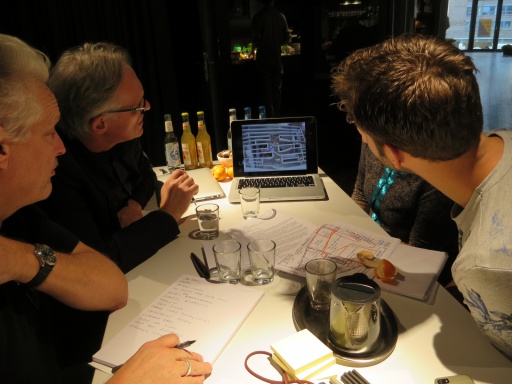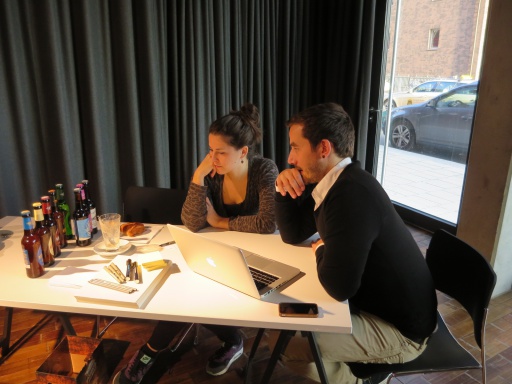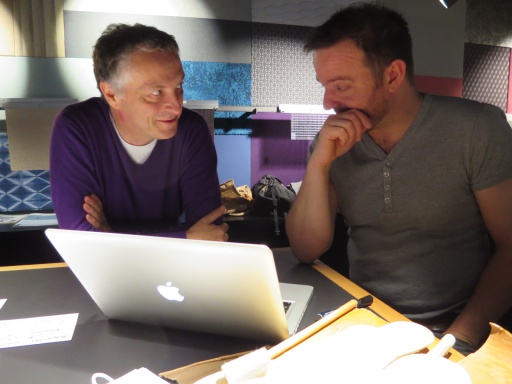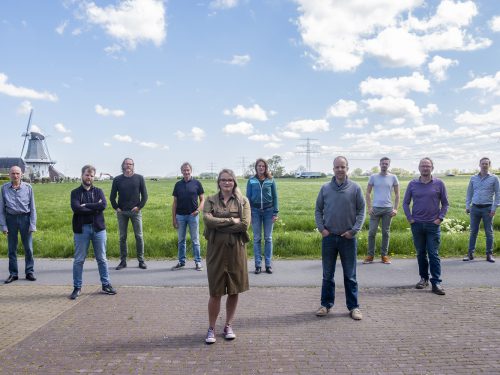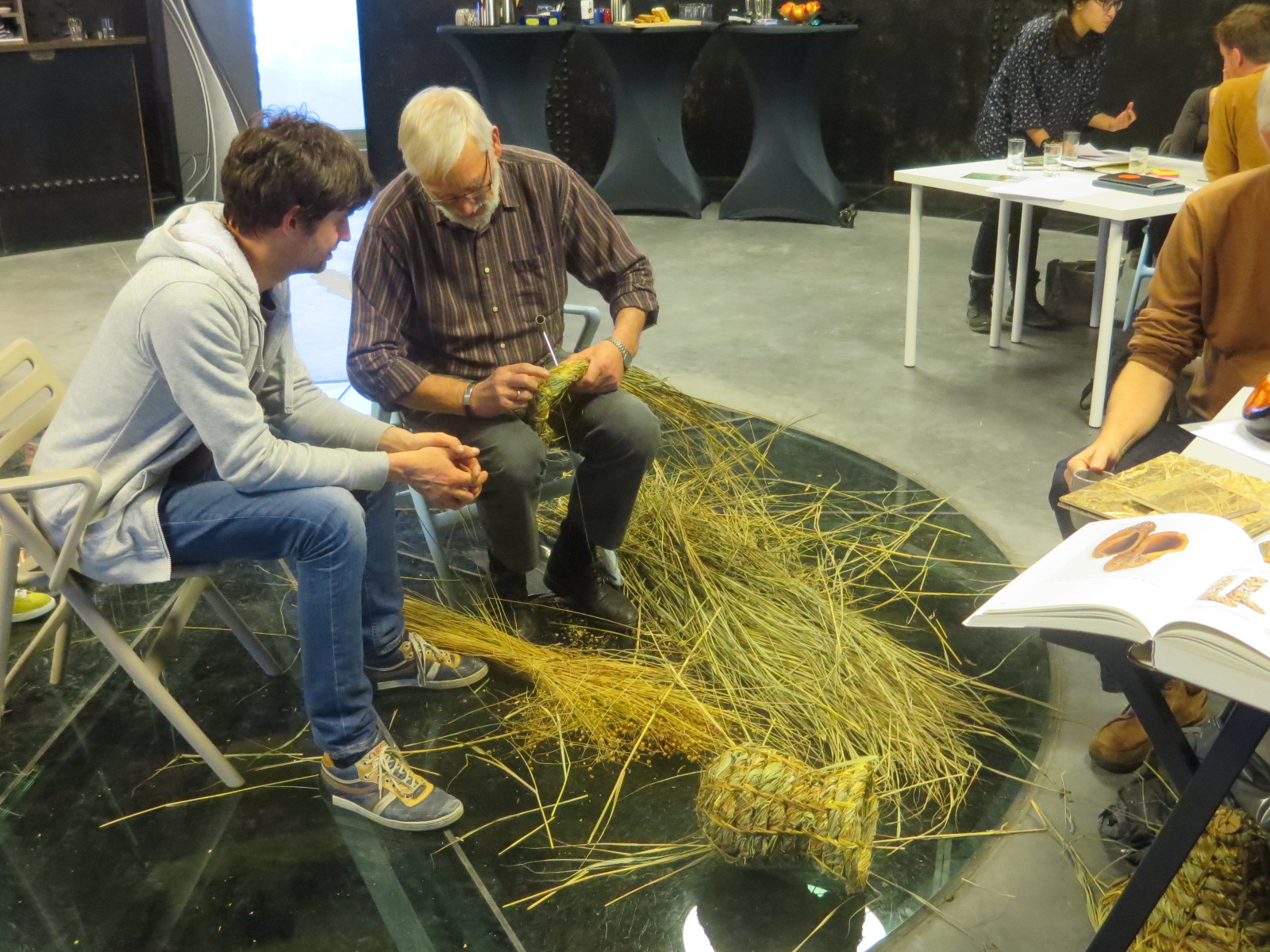
Pressure Cooker Design: Groningen and Hamburg
strengthening cooperation and the exchange of expertise and knowledge
At the end of November 2014, Designxport from Hamburg and House of Design once again organised a Design Pressure Cooker (DPC). Both parties invited entrepreneurs with a design question and then matched them with a Dutch and German designer respectively. The instruction language was English, so the participants did not communicate in their own language. This meant that entrepreneurs had to put in more effort to clarify the design questions, as did designers to explain their ideas and solutions. The difference in language and culture turned out to be successful.
Meeting each other
At the invitation of the City of Hamburg, the participants had dinner together the night before the DPC at Das Alte Mädchen in the Ratsherrn Brauerei. Nobody knew who he or she would be linked to; that was only announced the next morning. The dinner was a great opportunity to get to know each other a little better.
Target DPC
Designxport and House of Design wanted to strengthen the collaboration with this DPC. Both design centres believe it is important to exchange expertise and knowledge and to share this with a wide group of entrepreneurs. The idea is to organise a DPC with designers and entrepreneurs once every two years; one year in Hamburg and the next year in Groningen.
Outcome
You can read below some short reports of a selection of the pairs who worked together in Hamburg.
Ratsherrn (brewery in Hamburg) x Caro Graphic Design
The design question: come up with a brand name for a beer that shows the history of the craft of brewing.
Ratsherrn and Caro Turlings delved into history together to learn more about the connection between Hamburg and Groningen. There appeared to be many similarities between the two cities and the pair eventually came up with the name “Wise Beer”. The “Way” in which something is dealt with and it sounds like “Weiss”, wheat beer in German.
Caro: ‘In our search we discovered that there was a thirty-year war in German history. During this war, many large cities in Germany were destroyed and torn apart; except Hamburg. It flourished economically, creating a free state “Freiheit” where freedom of religion, expression and craftsmanship was possible. The Dutch also settled in the free state of Hamburg to share knowledge and craftsmanship there. The Golden Age ensures that the Netherlands becomes more prosperous and richer. The open attitude and stubbornness are characteristic of the Dutch.’
Rocket Industries x Marketing Hamburg GmbH
The design question: develop a typical Hamburg product.
To start with, Rocket Industries watched an existing promotional film about Hamburg, divided the text into short sentences and subjects and then looked at which products and materials fit well with the texts and subjects. Marketing Hamburg was very surprised at the outcome; a tangible, suitable Hamburg product to support the film.
Erik Wolterman and Lisa Sportel from Rocket Industries: ‘Hamburg is a city with allure. And people love poetry, culture, design and architecture. A series of posters has been designed, based on texts from the Hamburg promo. The design is manually created typography to emphasise expression and the work of people. Text fragments contain the elements water, fire, air and earth. The poster series has as common sender: Expect / Express Hamburg. This series could come back as a print on various products (from T-shirt to water bottle). The black typography on a white background reinforces the character and mindset of Hamburg; simple and down to earth.’
Herders van Balloo x Svenja Keune (Communicative Surfaces)
The pair looked at possible applications for wool together. From stackable seating blocks and folding screens to knitting patterns, fisherman’s sweaters and tents at festivals where wool benefits the acoustics. Some great solutions to the question: ‘What can I knit outside to be able to do more with spun wool.’
HuisVeendam x Stephen Williams Associates
HuisVeendam has developed biolaminate that can be used in interiors. Together with Stephen Williams, they looked at options for rounding the ends of the laminate sheets, for example by laminating the base material around the edges. For example, the material may also be used in furniture.
Huting en de Hoop x TUI cruises GmbH
TUI Cruises wants to build a Japanese restaurant on one of their cruise ships. A Japanese restaurant should actually have an open kitchen, but that is not permitted on ships. One of the ideas was to place a wall of water drops on which images can be displayed.
Ward Huting and Gerard de Hoop: ‘An empty space was created between the kitchen and the stairs to the restaurant. We originally wanted to locate a space for a Japanese tea ceremony here, but we decided not to do so because it is too far away from the customer’s experience. We started looking for something eye-catching for this place, something that people would like to come and see. We thought of something “robotic” as a nod to Japan and eventually it turned into a water curtain in which images can be seen by temporarily interrupting the water droplets. In this design, the natural and the mechanical are suitably united.’
Interested?
Are you curious about what a DPC can do for you and your company? Send an email to Eileen Blackmore via eileen@houseofdesign.nl.
IN SHORT
Where: Hamburg
When: 2014
Partners: Designxport Hamburg
Participants:
Ratsherrn bier uit Hamburg + Caro Graphic Design, Marketing Hamburg GmbH + Lisa Sportel en Erik Wolterman, Rocket Industries
Groninger Forum + Harald Krischer en Florian Borkenhagen Kwod, Herders van Balloo + Svenja Keune, Communicative Surfaces
HuisVeendam + Stephen Williams Associates
TUI cruises GmbH + Ward Huting en Gerard de Hoop, Huting en de Hoop
Workplace Solutions GmbH + Patrick Loonstra
